Finding arc length by integration
Categories: integration calculus

We often use the technique of integration to find the area under a curve. It is also possible to use integration to find the arc length of a curve. We will explore that in this article.
What is the arc length of a curve?
We know from elementary geometry how to calculate the length of an arc of a circle:
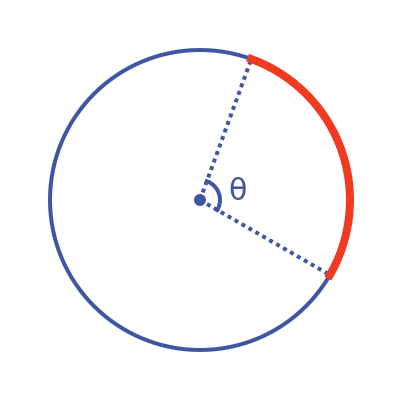
An arc is a part of the circumference of the circle. The red line is an example of an arc.
Intuitively, we might measure the length of the arc by placing a length of string along the red part of the circumference of the circle. We could then stretch out the string on a straight line to measure it. Alternatively, of course, we could use the standard formula, where r is the radius of the circle, and θ is the angle that the arc subtends at the centre, measured in radians:
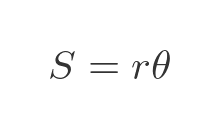
The arc length of a curve is quite similar, except that it might be based on a different function. Here is an arc on a quadratic curve:
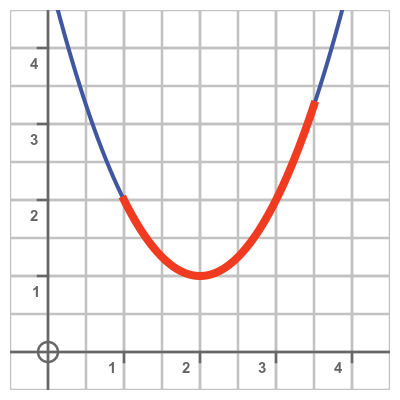
Again we could measure the approximate length of the arc with string, but for an exact result, we can use integration, as we will see below.
Area integration
To understand how we might use integration to calculate an arc length, it is worth taking a step back and revisiting how we use integration to calculate the area under a curve. Let's look at the shaded area under the curve created by some function f(x):
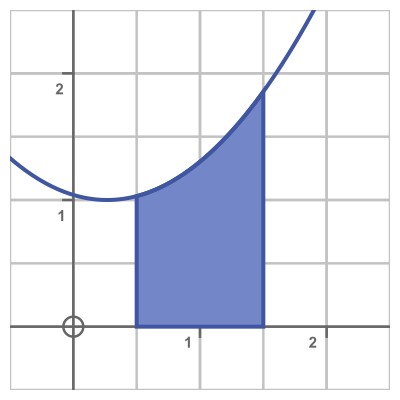
We can approximate this area by dividing the area into slices, each of width Δx and height f(x). The graphs show the area divided into two slices or four slices:
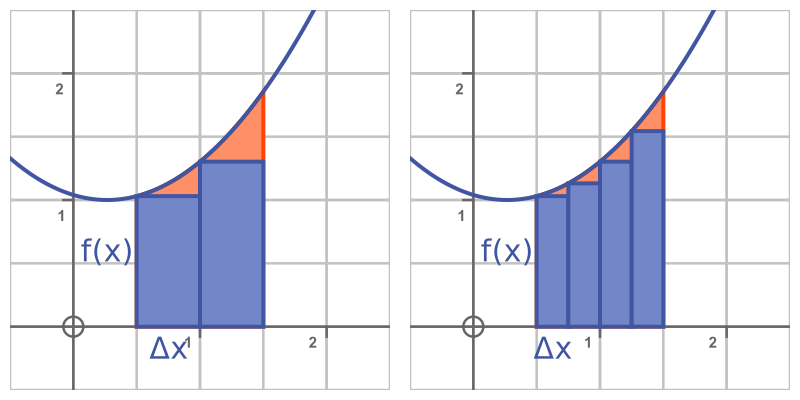
The area is approximately:
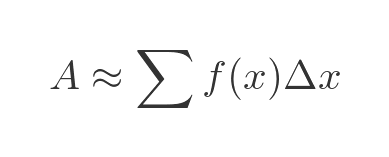
In the graph above, the individual blue rectangles represent the terms in the sum, so the total area of all the rectangles is the approximate area under the curve. The orange, triangular regions represent the error in the approximation. The important thing to notice is that, as the number of slices increases, the total orange area gets smaller, so the area of the blue rectangles gets closer and closer to the exact area under the curve.
As the number of slices increases, and Δx tends to zero, of course, the sum becomes a definite integral that gives the exact area under the curve:
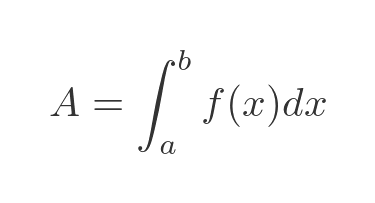
Length of arc - a naive (and incorrect) first attempt
Now let's try to find the arc length of an interval of this curve:
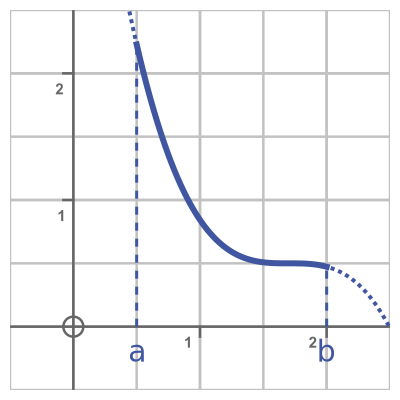
We will try the same technique as before. We will divide the curve into several sub-intervals, each of length Δx, and find the approximate arc length of each sub-interval. Then, hopefully, as we increase the number of slices, the approximation will get more and more accurate.
Let's make the simplest possible assumption, that the length of the arc is approximately equal to the width of the sub-interval, Δx. This is shown here, for two sub-intervals and four sub-intervals:
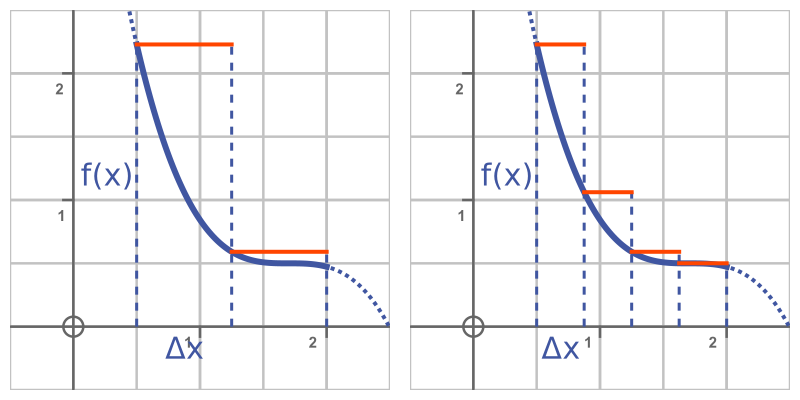
As Δx gets smaller and smaller, each sub-interval of the arc gets smaller too. But does this mean that the arc lengths will get closer to Δx? Well, unfortunately, no it doesn't.
It is easy to see why. In the first case, with two sub-intervals, the sum of the two Δx values is simply equal to the length of the interval, b - a. When we increase the number of sub-intervals to four, the four intervals, the sum of the lengths is still equal to b - a. No matter how small we make Δx, the total length will remain the same.
Length of arc - correct method
Rather than measuring the horizontal distance, Δx, between the different sub-intervals, we will try measuring the diagonal distance, Δs, between the two points on the curve at the start and end of each sub-interval:
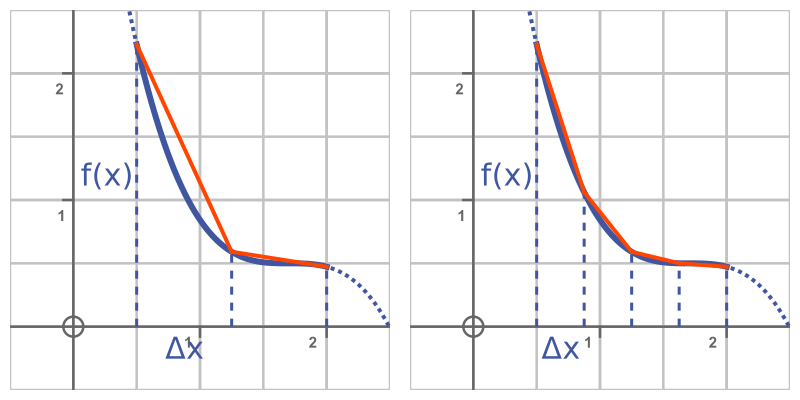
In this case, when we move from two sub-intervals to four sub-intervals, the diagonal lines become more similar to the curve. If we repeat this process with smaller and smaller values of Δx the approximation will converge on the original curve.
How do we find the value of Δs? Well, for each of the diagonal lines we can form a right-angled triangle involving Δx (the change in x since the previous point) and Δy (the change in y since the previous point):

We can use Pythagoras' Theorem to solve this triangle:
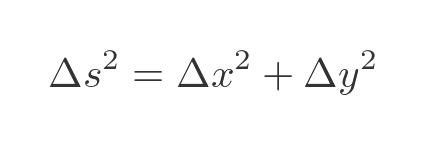
This gives Δs as:
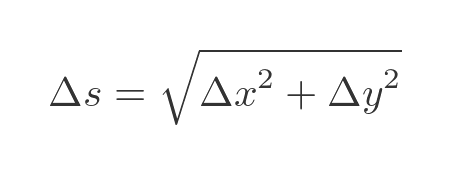
To convert this to an integral, it will be useful to get it is to the form of some function of x multiplied by Δx. We do this by dividing the terms under the square root by Δx squared and multiplying the entire expression by Δx. The first term under the square root then cancels to 1:

The total length of the arc can be found by summing the lengths of all the diagonal lines:
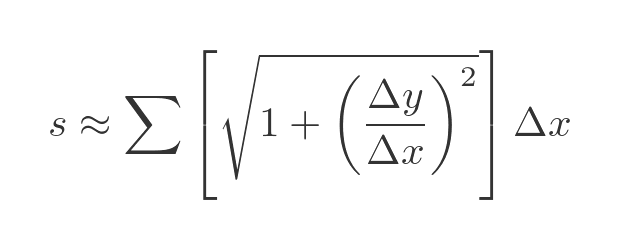
As with the area, if we allow Δx to become infinitesimally small, the sum becomes an integral. In this case, the term Δy over Δx becomes the derivative of y (ie the derivative of f(x)):
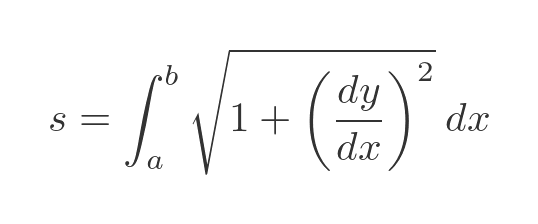
It really shouldn't surprise us that the derivative of f(x) should appear in the solution. After all, the length of each diagonal line depends on the slope of the line, which is equal to the slope of the curve at that point.
Example - arc length of cosh function
The solution is valid but the integrals it produces aren't particularly nice. We need to integrate the square root of an expression that includes the square of the derivative of our function. It can be messy, but it is what it is.
Most examples of arc length you will find tend to use slightly unusual functions that simplify the square root expression. We will proudly uphold that tradition with our first example, and find the arc length of the hyperbolic cosine function, cosh.
We will start with a standard result - the derivative of cosh is sinh:
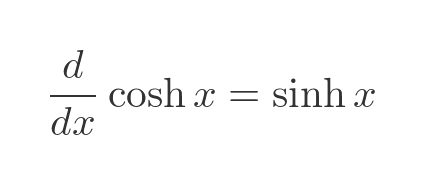
If we substitute this into the previous equation for the arc length as an integral we get:

We can use the following identity to simplify the integral. The third form is most useful to us:
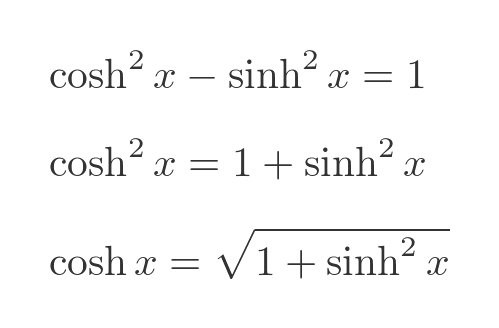
This, of course, is why the cosh function is such a nice example. The pesky square root disappears:
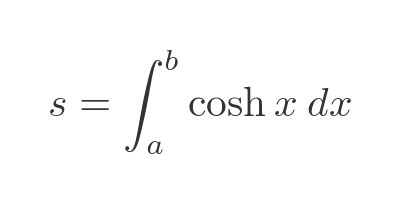
This is another standard result - the integral of cosh is also sinh:

So we have our result.
Another example
Here is another example. Again, it is a carefully chosen function:
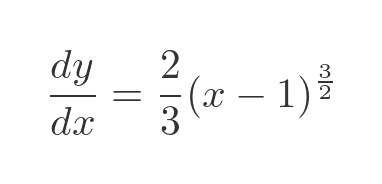
Using the standard rule for differentiating a power we have:

The original factor of 2/3 was, of course, designed to cancel out with the 3/2 obtained from the differentiation. Substituting this into the arc length formula gives:

Again this is designed so that the ones cancel, leaving a simple integral. It would be possible to solve the integral that wasn't designed this way, but it would be more complex and take away from the topic we are trying to explore. Here is the result:
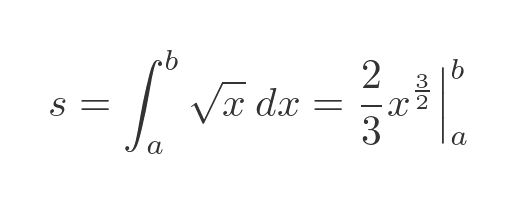
Swapping the axes
There is a useful observation that can sometimes be used to simplify the calculations. Consider the arc of f(x) over the interval a to b:
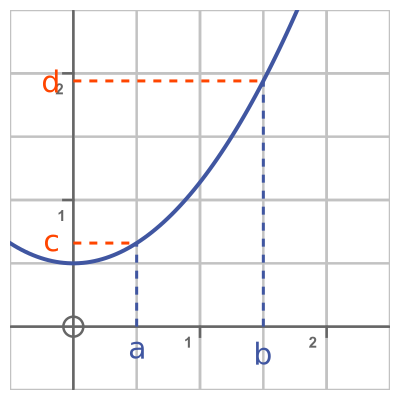
The same curve can also be described as a function g(y) where g is the inverse function of f:
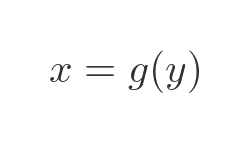
Since this is the same curve, it will have the same arc length. So instead of calculating the arc length integral for f(x) over the interval a to b, we can alternatively calculate the arc length integral for g(y) over the interval c to d. Here, c is f(a), and d is f(b).
If f(x) is difficult to integrate, it is worth checking if the inverse function is easier to deal with.
See also

Join the GraphicMaths Newletter
Sign up using this form to receive an email when new content is added:
Popular tags
adder adjacency matrix alu and gate angle answers area argand diagram binary maths cartesian equation chain rule chord circle cofactor combinations complex modulus complex polygon complex power complex root cosh cosine cosine rule countable cpu cube decagon demorgans law derivative determinant diagonal directrix dodecagon eigenvalue eigenvector ellipse equilateral triangle euler eulers formula exercises exponent exponential exterior angle first principles flip-flop focus gabriels horn gradient graph hendecagon heptagon hexagon horizontal hyperbola hyperbolic function hyperbolic functions infinity integration by parts integration by substitution interior angle inverse hyperbolic function inverse matrix irrational irregular polygon isosceles trapezium isosceles triangle kite koch curve l system line integral locus maclaurin series major axis matrix matrix algebra mean minor axis n choose r nand gate newton raphson method nonagon nor gate normal normal distribution not gate octagon or gate parabola parallelogram parametric equation pentagon perimeter permutations polar coordinates polynomial power probability probability distribution product rule proof pythagoras proof quadrilateral questions radians radius rectangle regular polygon rhombus root sech segment set set-reset flip-flop sine sine rule sinh sloping lines solving equations solving triangles square square root standard curves standard deviation star polygon statistics straight line graphs surface of revolution symmetry tangent tanh transformation transformations trapezium triangle turtle graphics uncountable variance vertical volume volume of revolution xnor gate xor gate